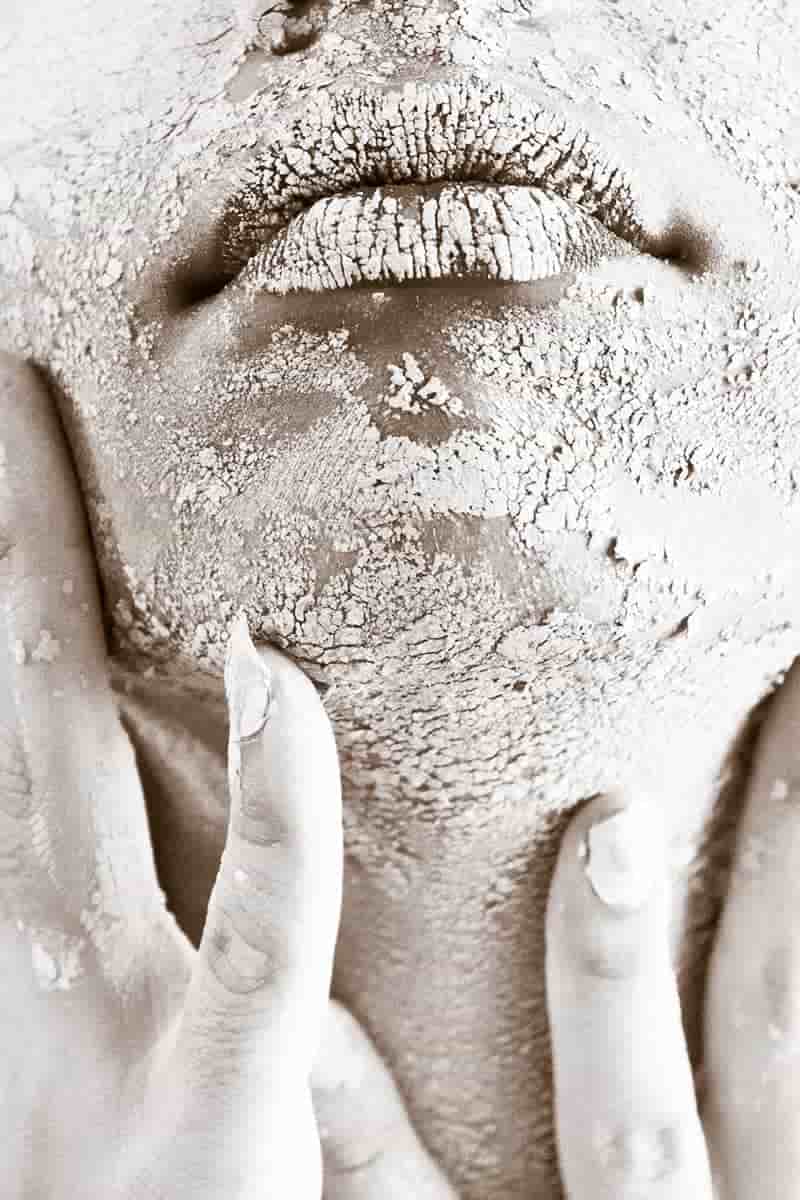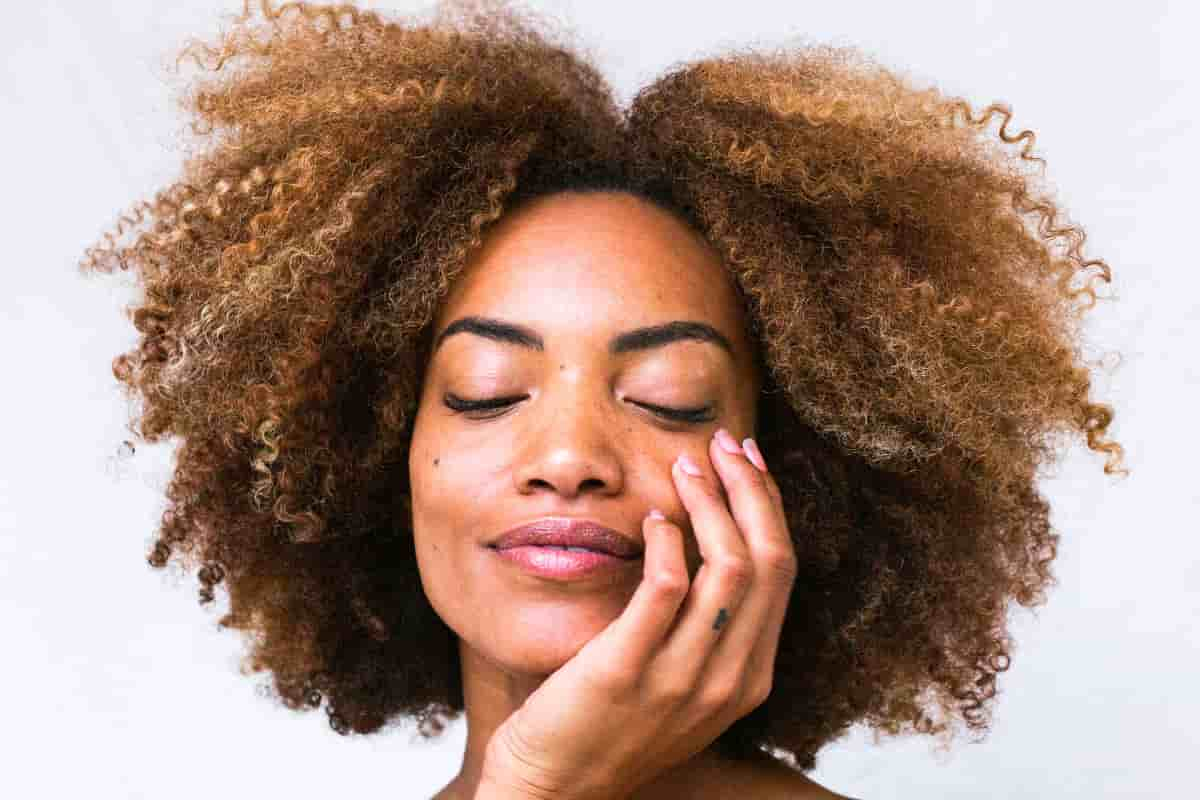Your Skin and Menopause

If you’re in perimenopause or postmenopause, you may notice your skin become dry, thin, slack, and more easily bruised or prone to redness. Age spots, lines, and wrinkles start to emerge and become more noticeable. Blemishes pop up unexpectedly. You may even sprout an embarrassing facial hair or two.
Your skin undergoes dramatic changes around menopause as estrogen and progesterone levels become erratic and eventually plummet. For some women, that change can feel like it happens overnight.
According to Olay Principal Scientist Dr. Frauke Neuser, the biggest changes in your skin over your lifetime occur during menopause. “Skin regeneration and repair slow down significantly while aging processes are accelerated.” A loss of natural lipids, like ceramides, fatty acids, and cholesterol, contributes to inflammation, dehydration, and a compromised moisture barrier.
During menopause, your skincare routine and products probably won’t work as well or address your new skin issues. If you’ve had a particularly dramatic swing in skin type, your current skincare regimen may be entirely unsuitable.
It’s easy to become frustrated with how to care for our skin, and many of us end up wasting money on a drawer full of products that don’t work. To help you make the transition to a new skincare routine, we’ve compiled the best tips on caring for your skin during menopause.
Dry, Dull Skin
During menopause, skin loses some ability to hold water, and there is a decrease in natural oils and collagen, causing thinner, dryer skin that looks dull. If you live in or are visiting a dry climate or are exposed to a dry environment like an airplane, dryness will be especially noticeable. Here are a few key tips to reverse dry, dull skin:
- Cleanse gently. Use a gentle cleanser, not a drying soap, to cleanse your face.
- Hydrate. Apply a moisturizer with hyaluronic acid after washing your face. Hyaluronic acid holds 1,000 times its own weight in water. It draws in moisture, so is ideal for hydrating the skin and giving you back your glow.
- Exfoliate gently. Use a gentle exfoliation product once a week to keep your pores clear of dead skin cells.
- Get a regular facial. The interval will depend on your unique skin needs. Some women benefit from facials every six to eight weeks, while others are fine with a couple of times a year. Find an esthetician who understands the unique needs of menopausal skin.
If professional facials are not in your budget, practice this seven-step regimen at home every couple of weeks to get some of the same benefits of a professional facial. It’s preferable to complete the routine at night and sleep on a clean pillowcase.
Make sure to wash your pillowcases frequently, as they can be a breeding ground for bacteria, dead skin cells, hair oils, and other pore-clogging matter. Self-extractions and picking at the skin can worsen acne, so leave this step to a professional.
- Cleanse your skin with a gentle face wash. Even if you are not wearing makeup, wash your skin to remove accumulated dirt and pollution.
- Gently exfoliate. Don’t rub too hard.
- Steam your skin with a clean washcloth run under hot water, taking care not to burn your skin. Leave the cloth on your skin for a few minutes.
- Apply a clay mask to cleanse your pores and remove impurities. If your skin is very dry and not acne-prone, skip the clay mask as it may be over-drying.
- Repeat the steaming-washcloth routine to remove the mask.
- Apply a hydrating mask for dry skin or a brightening mask for dull skin, and rinse it off with cool water.
- Finish by applying a moisturizer. If you are going to go out in the sun, make sure it has an SPF of at least 30.
Fine Lines, Wrinkles & Slack Skin
Your skin stays plump largely due to collagen, which is lost during menopause. Skin starts to sag, and wrinkles become more prominent. Studies show that women’s skin loses about 30% of its collagen during the first five years after menopause.
After that, the decline is more gradual. Women lose about 2% of their collagen every year for the next 20 years. These tips will help you avoid sun-related damage and prevent and repair fine lines, wrinkles, and sagging skin.
- Protect your skin from the sun. Use a moisturizer with a broad spectrum SPF of 30 or higher daily. Don’t forget to protect your neck and chest. During the summer months, wear a broad-brimmed hat for extra protection.
- Avoid tanning. Whether in the sun or tanning beds, UV radiation is not your friend. It will only accelerate the aging process and further damage the skin.
- Use a moisturizer daily. It will trap moisture brighten your skin, and make lines less visible.
- Try a serum. To further hydrate and re-densify the skin.
Blemishes
Hormone fluctuations are frequently blamed for breakouts, although certain foods and product ingredients can also make you break out. Your body changes during menopause, and foods and products you once tolerated may now cause acne.
- Some makeup, along with many skin and hair care products, contain oil or other ingredients that can cause acne breakouts. If you continue to use them, you may continue to see blemishes.
- Look for oil-free makeup products.
- Certain mineral powder foundations like Alima Pure Satin Matte loose powder and BareMinerals Original Loose Mineral Foundation are generally okay for daily use, while certain liquid foundations are okay for occasional use.
- Stay away from common poor clogging ingredients in hair products, including sodium lauryl sulfate, sodium coco sulfate, and sodium laureth sulfate.
- Certain foods can cause breakouts. Try an elimination diet to see how your skin responds. The shortlist of potential acne-causing foods includes:
- Dairy (includes whey protein shakes)
- Soy (includes soy protein shakes)
- Peanuts (includes peanut oil and peanut butter)
- High glycemic foods/high sugar (white refined grains/breads/carbs, alcohol/beer, sweets, sodas)
- High sodium/salty processed food (fast food, pizza, cured deli meat, packaged foods)
- Iodine (includes iodized salt, spirulina, kelp, seaweed, carrageenan, chlorella)
- High amounts of caffeine (boba, coffee drinks, pre-workout shakes, energy drinks)
- Get plenty of sleep on a regular schedule. Lower your stress levels with daily self-care activities. Don’t touch your cell phone to your cheek. Wash your pillowcases at least once a week. Forgo fabric softener, including dryer sheets and fragranced detergent.
- Supplements that may help with acne include fish oil, probiotics, and zinc. Make sure the brand is of high quality, and you don’t overdo it.
- Don’t sleep in your makeup. Wash your makeup brushes and applicators frequently.
- Cleanse your skin after workouts or after any activity that causes you to sweat. Don’t forget to reapply sunscreen if you are outside.
Red, Irritated Skin
Around age 50, the pH level of your skin changes. With this change, skin becomes more sensitive, and most women are more likely to develop rashes and easily irritated skin. You may also notice that you become sensitive to itchy fabrics, soaps, or beauty products.
Additionally, hot flashes can trigger or aggravate rosacea. This chronic skin condition causes swelling of the blood vessels beneath the facial skin, causing redness, spider-like blood vessels, or acne-like blemishes.
- Don’t use too many products at once, and introduce one new product at a time. For most people, a simple skincare routine is best. Test the products on the back of your hand or arm if you are particularly sensitive.
- Avoid any products with fragrance. According to the American Academy of Dermatology (AAD), fragrances are considered the leading cause of cosmetic contact dermatitis. Fragrances are not regulated by the FDA and may contain synthetic, preservative, or allergy-provoking substances. Most likely, scented products are not using 100% natural fragrance.
- Check the EWG’s Skin Deep database for products that use fewer chemicals and skin irritants.
- Wear clothing and use bedding made from natural fibers like cotton and silk that allow your skin to breathe.
- See a dermatologist for any suspicious or persistent skin irritations.
Age Spots
Age spots are the little brown spots that often appear on your face, chest, and the back of your hands, although they can appear anywhere on the body. People with lighter skin and those who have had prolonged exposure to the sun or used a tanning bed earlier in life are most likely to get age spots.
A few options for removing and preventing age spots include:
- Creams and lotions can help lighten brown spots, but be prepared to apply the product daily for a few months before you notice a difference. Also, make sure that the product you select doesn’t contain harmful ingredients like mercury.
- Various treatments administered by a board-certified dermatologist work faster. However, they cost more, and there are potential side effects. Even with treatment, age spots can return, so it’s important to avoid the sun after investing in one of these procedures.
- Laser therapy typically entails one or two sessions, and results can last longer than creams and lotions.
- Cryotherapy entails freezing the age spot. As the skin heals, it looks lighter.
- Microdermabrasion is when the dermatologist smooths away the age spots. You might have temporary post-treatment skin redness or flaking.
- Chemical peeling involves brushing a chemical solution onto the skin to exfoliate it, then peeling away the dead cells.
- Protect your skin from the sun. Use a moisturizer with a broad spectrum SPF of 30 or higher daily on your face, neck, and chest. A recent study found that you can avoid age spots using a daily SPF of 30. During the summer months, wear a broad-brimmed hat for extra protection. If you garden or cycle, wear gloves to avoid getting spots on the back of your hands.
- What looks like an age spot could be skin cancer. Get a skin cancer check at least once a year and anytime you notice a suspicious mark on your skin. Read this resource to learn how to spot skin cancer.
Parting Wisdom
Adapting your skincare routine is an important part of caring for aging skin. Still, there are other aspects of our lifestyle, like lowering stress levels and eating healthy, that play a vital part in helping us get and keep that lovely glow.
Sign up for more unique women’s health content
By submitting this form, you agree to the Lisa Health Privacy Policy and Terms of Use


